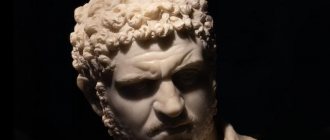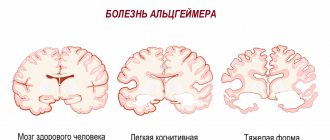Megalomania is a mental disorder in which the patient feels like a great person without having any objective basis for this. Many people think that megalomania is when a person considers himself Napoleon. In fact, not every “Napoleon” has delusions of grandeur - for the majority we can only talk about delusional-hallucinatory syndrome.
Now, if the patient believes that it was he who found the cure for all diseases, took over (or will take over) the world, there is a high probability that he really has delusions of grandeur. The patient himself will zealously deny his painful condition - he will be firmly convinced that his abilities are true, great roles and missions are destined for him.
Delusions of grandeur: patient personality traits
Every thought of a patient with delusions of grandeur is focused on his true value to society and the exclusivity of his ideas. As a result, his every act and every conversation, every thought and every action will be aimed at recognizing this very great value in society, alerting the maximum number of listeners about the existence of the patient and his exclusivity.
Such a patient cannot simply believe that there are still people on the planet who, due to their illiteracy and wretchedness, do not know about him, his ideas and great plans. He sincerely believes that everyone must admire and praise him, set him as an example and love his ideas as their own. It is difficult (almost impossible) to convince the patient that the ideas he voiced are not so important and wonderful, and that things are ordinary. A person with delusions of grandeur will attract more and more listeners into his circles.
Symptoms and signs
There are several main types of delusions of grandeur that are characteristic of patients with this disease.
With delusions of wealth , a person is mistakenly convinced that he is very rich. Moreover, his ideas can be quite plausible and implausible.
Nonsense is considered plausible, for example, when a person claims that he has 100,000 rubles, which he actually does not have, but could have.
In the second case, the patient may believe that he owns all the gold in the world, he has a house made of diamonds, and so on.
Photo 2. Megalomania is usually accompanied by egocentrism. Source: Flickr (Adriano Ferreira).
Patients with delusions of a special origin believe that they belong to an influential family and may imagine themselves to be relatives of famous personalities. In the delirium of invention, the patient is convinced that he has made a great discovery.
A patient with delusions of reformism believes that he has invented a theory that can change the life of society.
A patient with delusions of falling in love believes that someone famous or very influential has fallen in love with him.
In addition to pathologically inflated self-esteem and obsessive delusions of grandeur, which manifest themselves in behavior and communication, megalomania is accompanied by :
- egocentrism;
- narcissism (narcissism);
- lack of interest in the opinions of others;
- increased aggressiveness;
- sudden mood swings;
- increased activity;
- sleep disorders.
Delusions of grandeur have characteristic manifestations that indicate the presence of pathology. But only a specialist can make an accurate diagnosis after reviewing the medical history and conducting the necessary tests.
Symptoms of pathology with megalomania
Not every patient’s pathological condition (in fact, megalomania itself) will manifest itself quite clearly and actively, accompanied by strong delusional ideas and attempts to convey and impose one’s own views on others. Symptoms of the pathological process may also include other manifestations:
- Excessive activity of the patient. The most striking symptom of megalomania is the patient’s active promotion of his ideas, hypertrophied energy and the absence of a visible feeling of fatigue.
- The patient is bothered by frequent and unreasonable mood swings. In a person, stupor can be replaced by excessive excitement, a depressive state can be sharply replaced by euphoria, and so on. Such changes are practically not controlled by the patient himself and occur outside his will and power.
- High self-esteem of the patient. A person believes that his ideas are of high value, and he himself is an exalted bearer of invaluable knowledge. At the same time, the patient demands the same recognition and respect from his environment.
- The patient is unable to adequately perceive the reality around him, to perceive reality. Every remark will be received with hostility, advice will be ignored or sharply and very rudely suppressed.
- The patient is simply not able to perceive someone else’s opinion and position - he will deny any criticism and every alternative opinion existing in his environment.
- The patient is regularly bothered by insomnia - it is caused by excessive activity, which is always accompanied by delusions of grandeur. A person with a “manya” is prevented from falling asleep normally by obsessive thoughts about his greatness.
In men, delusions of grandeur are diagnosed much more often than in women - they are characterized by a greater manifestation of aggression in the process of conveying their own thoughts and ideas, which can result, among other things, in physical manifestations of aggression. Men are active and persistent, trying to neutralize everyone, even an imaginary rival, trying to challenge the greatness of the patient.
In women, delusions of grandeur occur in milder forms and attacks of intense aggression are very rare. The main motive of “great women” is to be the best in everything. Megalomania often takes the form of erotomania and delusion; women often invent intimate relationships with celebrities as indicators of their greatness. In women, megalomania is often accompanied by bouts of depression and suicidal tendencies, which practically never happens in men.
Scope and types of delusional ideas
A delusional idea is equivalent to a false judgment, which has the following characteristics:
- delirium that occurs against the background of illness,
- extreme determination of one’s importance,
- indisputability of ideas and actions.
Against the background of various forms of manifestation and occurrence of delusional ideas, several types stand out:
— delusion of persecution is a paranoid delusion when a person constantly has the feeling that he is being pursued, threatened and even wanted to kill,
- delusion of self-blame - a depressive type of delirium, which is clearly manifested in a feeling of guilt for an allegedly committed act. If this condition is neglected, it can lead to suicide,
- delusions of grandeur - manic delirium, which implies a clear overestimation of one’s personality. It is this condition that is often behind the destruction of relationships in families, at work and in society.
In science, the concept of “delusions of grandeur” is called megalomania or expansive delusion. This is a pathopsychological syndrome that is manifested by distorted self-perception and manifests itself through a global revaluation of one’s own personality.
Factors and risks of developing megalomania
Based on statistical data, the main “risk groups” for megalomania are identified:
- Patients with mental pathologies, especially with a predominance of schizophrenia and manic-depressive psychosis.
- Men with alcohol or drug addiction.
- Patients who have suffered head trauma or severe mental experiences (especially in childhood).
During the pathological process, patients alternate between the following stages:
- Mild symptoms.
- Full-blown manifestation of pathology (delusional manifestations).
- Period of decompensation (depression, physical/mental exhaustion).
Causes
Megalomania develops as a result of another mental disorder , becoming one of its manifestations. Such mental disorders include:
- paranoia;
- manic syndrome;
- schizophrenia;
- bipolar affective disorder;
- progressive paralysis.
There are several factors that contribute to the development of delusions of grandeur:
- genetic predisposition;
- diseases of the nervous system;
- brain injuries;
- previous syphilis;
- taking certain medications;
- drug use;
- psychological trauma received in childhood.
Delusions of grandeur often develop in people who, due to a genetic predisposition, have an excess of the neurotransmitter dopamine in some areas of the brain and at the same time a reduced number of dopamine receptors.
Also, this mental pathology often affects patients with neurodegenerative diseases - Parkinson's disease, Alzheimer's disease, Wilson's disease and Huntington's disease.
The risk of developing megalomania increases with injuries to the frontal and parietal lobes of the brain, as well as the amygdala. Drugs that provoke its development include Levodopa.
Note! Ordinary inflated self-esteem can develop into megalomania. Also, the risk of developing this mental disorder is increased in people who are characterized by excessive perfectionism and a desire for leadership.
Glossary of terms
In this section we have collected all the terms that you might encounter in this article. Gradually, we will collect from these explanations a real dictionary of a narcologist-psychiatrist. If some concepts remain unclear to you, leave your comments under the articles on our site. We will definitely help you figure it out.
Delusional-hallucinatory syndrome
– a type of hallucinosis that is accompanied by delusions. In terms of content, this delusion corresponds to hallucinations, which is why the patient achieves strong confidence in the reality of fictitious (hallucinatory) events.
Diagnostic methods
To diagnose delusions of grandeur, the Young test, . It includes eleven questions, each of which has five answer options. This test assesses the patient's mood, energy level, activity level, sleep quality, mental stability and level of irritability, thought disorders and quality of speech, attention to one's own appearance and neatness, and sexual activity.
Another important point is the patient’s recognition or denial of pathological changes in his behavior.
Testing gives a fairly large number of false positive results. Therefore, the psychiatrist conducting it must compare the data obtained during the Young test with information that the patient himself or his relatives can tell him, as well as with the clinical manifestations of the disease that arise during the conversation with the patient.
Note! A patient suffering from delusions of grandeur requires treatment from a psychiatrist. A psychotherapist and a neurologist can also provide valuable assistance to such a patient.
How to get rid of the disease
You need to understand that megalomania is not a psychological disorder, but a real mental illness. Therefore, the approach to its treatment must be comprehensive. This disease does not appear to be completely curable, but its symptoms can be significantly alleviated. At the same time, the primary task of specialists is to treat the underlying disease, the manifestation of which is megalomania.
Depending on the type of underlying disease, the doctor prescribes certain antipsychotics, tranquilizers, and sedatives. In each case, the approach to the patient is individual. In addition to medications, psychotherapy is prescribed.
The patient may not realize that he is seriously ill. Then compulsory treatment is prescribed, which is carried out in a psychoneurological dispensary.
Megalomania is a recurring disorder: that is, even after maximum recovery, it can reappear, sometimes even more severely. Therefore, even after the patient is cured, he should be strictly monitored.
Characteristic in this sense is the story of John Nash, an outstanding mathematician who suffered from schizophrenia in the form of megalomania. At one time he was appointed to a prestigious university post, but he refused because, in his words, “he had been elected emperor of Antarctica.” After taking antipsychotic drugs for a long time, his condition began to improve, he almost recovered; but then he refused further medication, and the symptoms of the disease reappeared.
Famous people with schizophrenia, including megalomania, are a special topic. There were quite a lot of them, and, according to some sources, it was their illness that was the basis of their unsurpassed creativity.
“Nuclear mosaic schizophrenia” - this was the diagnosis, according to many researchers, of Friedrich Nietzsche; The basis of this disease is precisely delusions of grandeur. Naturally, only such a person could write a book about the superman and create an entire doctrine about him. Adolf Hitler, an ardent admirer of Nietzsche and a promoter of the even more provocative theory of racial superiority, also seemed to suffer from delusions of grandeur.
Vincent Van Gogh also suffered from delusions of grandeur. At one time he considered himself an oracle. The famous artist’s illness was varied - it manifested itself in aggressiveness, self-flagellation and self-mutilation (the famous story of how he cut off part of his ear), and religious fanaticism.
The meaning of megalomania, like many other mental disorders, is that the patient seems to lose his sense of reality. His thoughts about his superiority are a kind of ideal that he would like to strive for. However, he is too immersed in this ideal and does not realize that in reality it does not exist; “greatness” takes place only in the consciousness of the patient, but not in the real world. This suggests what kind of psychotherapy should be used.
Hitler, given above as an example, is not the only ruler who had pronounced traits of megalomania. In essence, this pathology can be suspected in any tyrant, dictator, as well as in those who support the dictatorial regime and its propaganda. Megalomania in this case is manifested in the exaltation of everything that the patient is related to: this is the country of origin, and his religion, and skin color, and profession, and language, as well as gender, age, height, sexual orientation, etc.
At the same time, exaltation of oneself and one’s attributes (race, nation, gender...) often coexists with the patient’s practical incapacity: “the greatest man in the world” does not even have basic work skills and cannot be useful to society in any way. The desire to gain recognition outstrips the need to study and work. That is why if such a patient is convinced of his lack of greatness, then he loses the meaning of life: he begins to understand that in reality he is no one and cannot do anything. So treatment must also have a labor component: the patient must take at least some courses and acquire a profession, must be employed. If the patient initially works - most often holds some position - then with successful treatment he becomes convinced that he received his position undeservedly, because his inappropriate behavior only brings losses to the organization. In this case, he must be transferred to another position - perhaps a lower one, but requiring real labor effort; you can put him in the place of an ordinary employee, this will help dispel illusions and study the work of his (now former) subordinates from the inside.
What to do if mania develops
The first step is to organize an examination of the patient by a psychiatrist. This is often difficult, since in a state of mania, patients feel great and, as a rule, refuse to be examined by a doctor. If you are faced with the fact that your loved one has the symptoms of mania described above, you should contact a psychiatrist yourself, tell him about the patient’s condition and get advice on how to proceed further. Often, in order to provide assistance to such patients, it is necessary to resort to involuntary hospitalization.
Treatment of the disorder.
Delusions of grandeur are not treated separately, but therapy is directed towards the general disease that became the cause. For this person, psychotherapists and psychiatrists examine them through conversations, interviews, tests and practical tasks.
After diagnosis, psychological and pharmacological treatment is prescribed. In most cases, only by combining the two types of therapy can a result be achieved. The following types of medicine can be used:
- neuroleptics;
- antidepressants;
- tranquilizers;
- sedatives.
The work of a psychotherapist is aimed at reducing the level of aggression towards others. Conversations are also held about what worries the client, because it may be based on psychological trauma or a stress factor. You can deal with this information: figure it out, try to improve the situation.
Symptoms
Mania is characterized by an elevated mood, with a feeling of euphoria, lightness, “special clarity in the head,” a feeling that “everything is working out easily,” and optimism. Such people speak quickly and a lot, are “easy-going”, and look younger than their age. They easily form ideas of their own greatness, superiority and even power. Often because of this, they give up their usual activities (study, work, projects), leave their families, change their religion and even their appearance (dye their hair, have plastic surgery). Mania is always accompanied by hyperactivity: patients are restless, active, constantly busy with something, and do not feel tired. Sleep is disturbed: it shortens or stops altogether.
During a manic state, patients take out loans, commit irrational actions, make expensive purchases, and enter into marriages that quickly break up.
Definition
In psychiatry, mania (manic state) is a mental disorder that is manifested by three signs: elevated mood, accelerated thinking and increased activity.
The people widely understand the word mania as “being overwhelmed by something,” which does not reflect the scientific definition of this term.
Mania is the complete opposite of depression, which is characterized by low mood, slower thinking, and decreased activity.
Mania (or manic state) is a painful condition that requires evaluation by a psychiatrist and treatment. An untreated manic state can reach the level of psychosis and even confusion, which is life-threatening.









